NASA’s Voyager 1 Resumes Sending Engineering Updates to Earth

NASA’s Voyager 1 spacecraft is depicted in this artist’s concept traveling through interstellar space, or the space between stars, which it entered in 2012.
After some inventive sleuthing, the mission team can — for the first time in five months — check the health and status of the most distant human-made object in existence.
For the first time since November , NASA’s Voyager 1 spacecraft is returning usable data about the health and status of its onboard engineering systems. The next step is to enable the spacecraft to begin returning science data again. The probe and its twin, Voyager 2, are the only spacecraft to ever fly in interstellar space (the space between stars).
Voyager 1 stopped sending readable science and engineering data back to Earth on Nov. 14, 2023, even though mission controllers could tell the spacecraft was still receiving their commands and otherwise operating normally. In March, the Voyager engineering team at NASA’s Jet Propulsion Laboratory in Southern California confirmed that the issue was tied to one of the spacecraft’s three onboard computers, called the flight data subsystem (FDS). The FDS is responsible for packaging the science and engineering data before it’s sent to Earth.

After receiving data about the health and status of Voyager 1 for the first time in five months, members of the Voyager flight team celebrate in a conference room at NASA’s Jet Propulsion Laboratory on April 20.
The team discovered that a single chip responsible for storing a portion of the FDS memory — including some of the FDS computer’s software code — isn’t working. The loss of that code rendered the science and engineering data unusable. Unable to repair the chip, the team decided to place the affected code elsewhere in the FDS memory. But no single location is large enough to hold the section of code in its entirety.
So they devised a plan to divide the affected code into sections and store those sections in different places in the FDS. To make this plan work, they also needed to adjust those code sections to ensure, for example, that they all still function as a whole. Any references to the location of that code in other parts of the FDS memory needed to be updated as well.
The team started by singling out the code responsible for packaging the spacecraft’s engineering data. They sent it to its new location in the FDS memory on April 18. A radio signal takes about 22 ½ hours to reach Voyager 1, which is over 15 billion miles (24 billion kilometers) from Earth, and another 22 ½ hours for a signal to come back to Earth. When the mission flight team heard back from the spacecraft on April 20, they saw that the modification worked: For the first time in five months, they have been able to check the health and status of the spacecraft.
Get the Latest News from the Final Frontier
During the coming weeks, the team will relocate and adjust the other affected portions of the FDS software. These include the portions that will start returning science data.
Voyager 2 continues to operate normally. Launched over 46 years ago , the twin Voyager spacecraft are the longest-running and most distant spacecraft in history. Before the start of their interstellar exploration, both probes flew by Saturn and Jupiter, and Voyager 2 flew by Uranus and Neptune.
Caltech in Pasadena, California, manages JPL for NASA.

News Media Contact
Calla Cofield
Jet Propulsion Laboratory, Pasadena, Calif.
626-808-2469

Interstellar Messengers
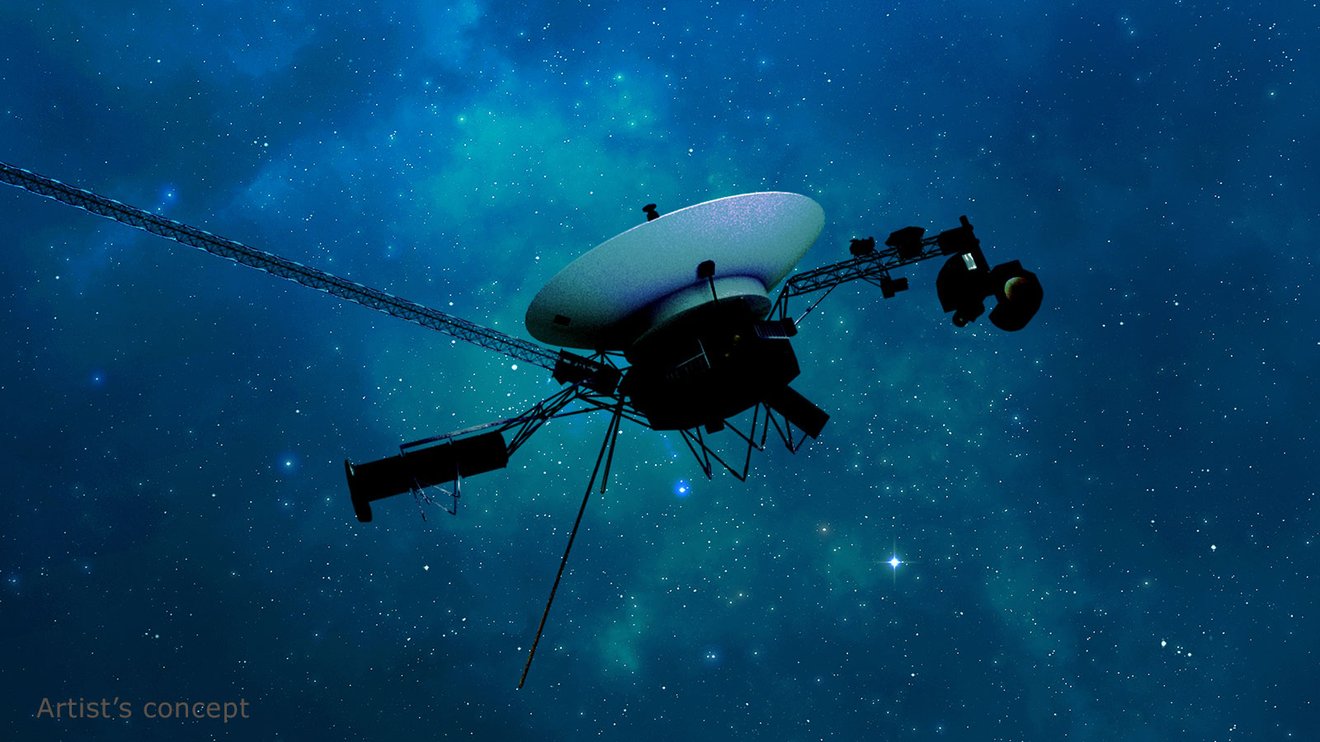
Voyager 1 and its twin Voyager 2 are the only spacecraft ever to operate outside the heliosphere, the protective bubble of particles and magnetic fields generated by the Sun. Voyager 1 reached the interstellar boundary in 2012, while Voyager 2 (traveling slower and in a different direction than its twin) reached it in 2018.
Mission Type
Science Targets
Voyager 1 & 2
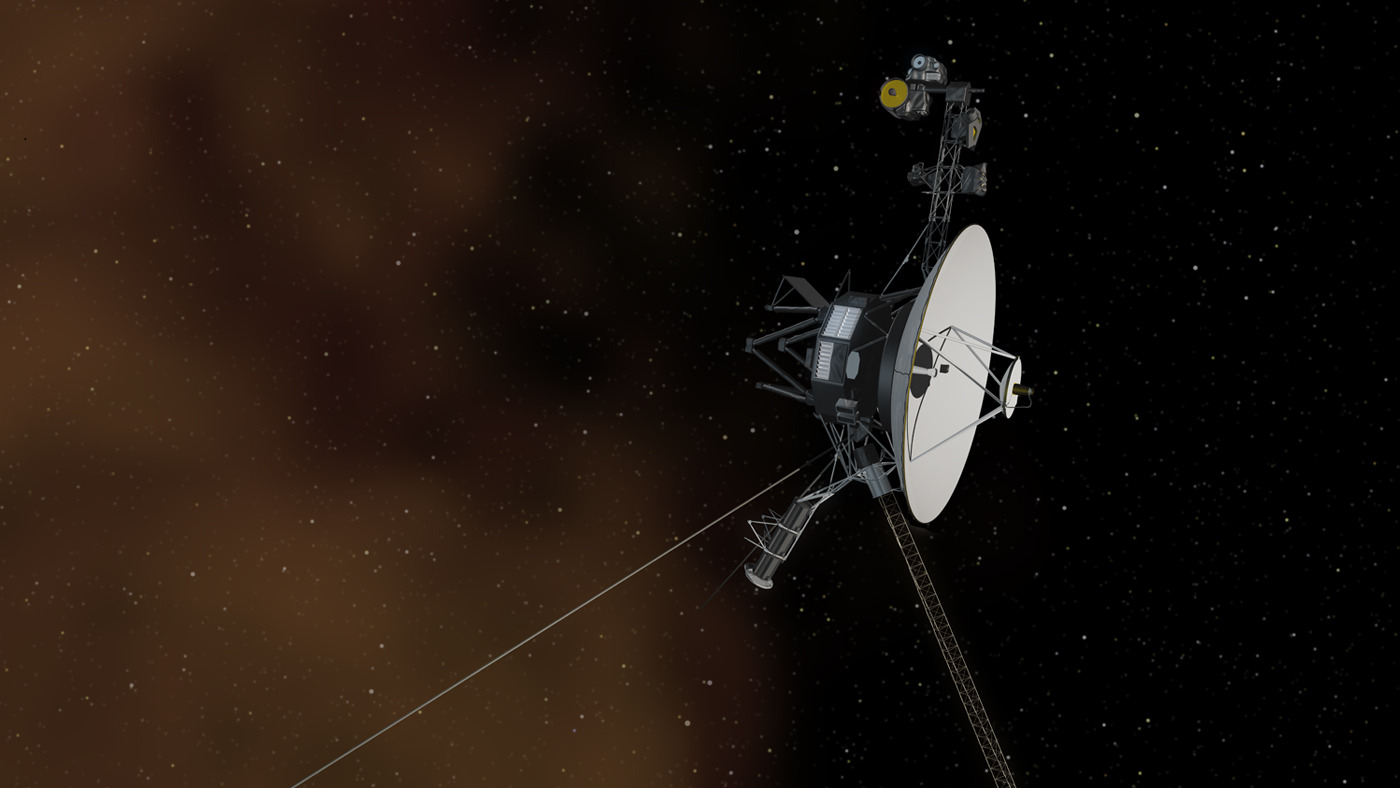
Mission Updates
Voyager 1 resumes sending engineering updates to Earth.
Latest News
NASA’s Voyager Team Focuses on Software Patch, Thrusters
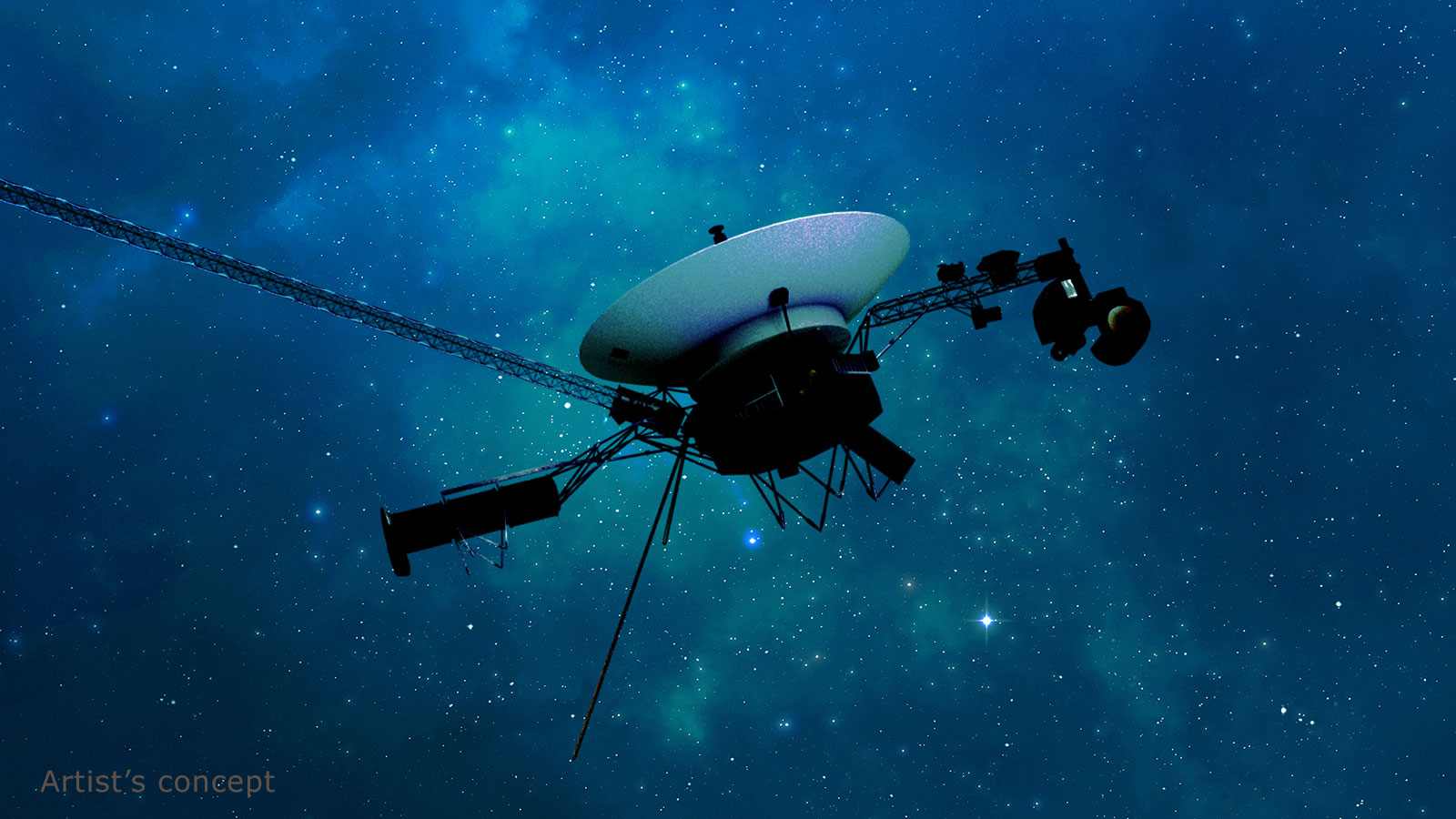
NASA’s Voyager Will Do More Science With New Power Strategy
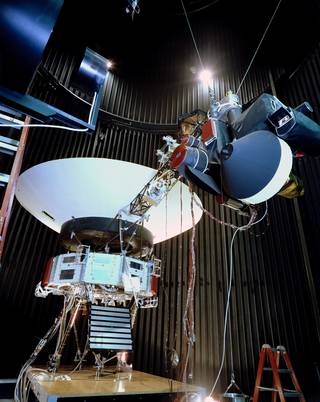
Edward Stone Retires After 50 Years as NASA Voyager’s Project Scientist
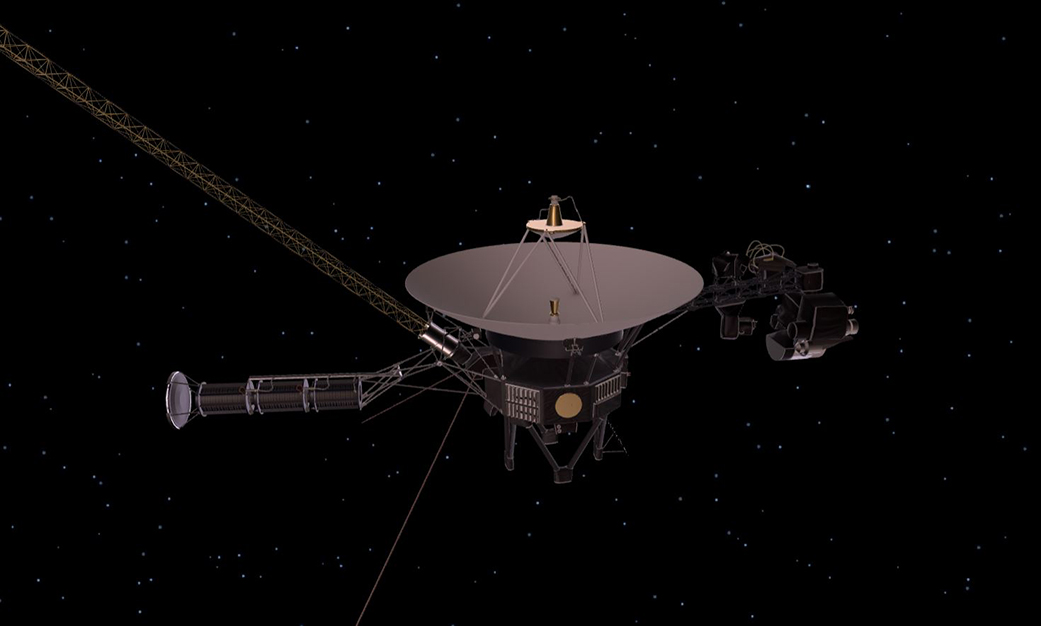
Engineers Solve Data Glitch on NASA’s Voyager 1
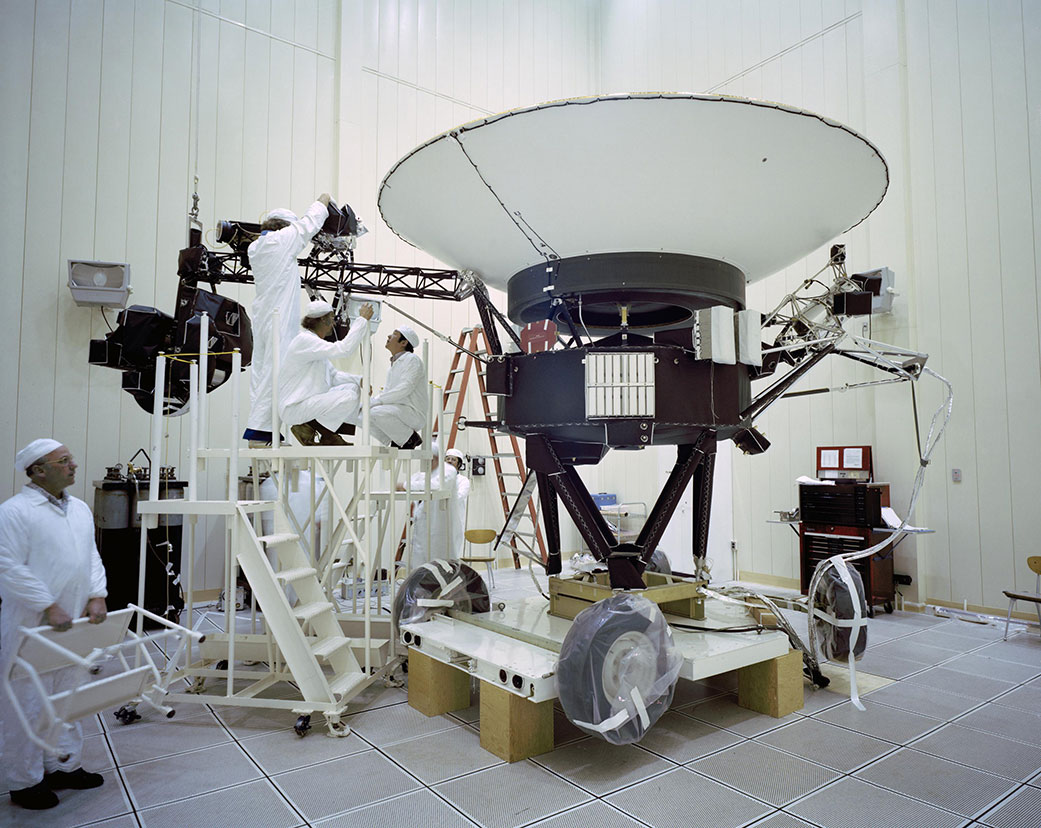
Voyager, NASA’s Longest-Lived Mission, Logs 45 Years in Space
The Interstellar Mission
After completing the first in-depth reconnaissance of the outer planets, the twin Voyagers are on a new mission to chart the edge of interstellar space.
The Golden Record
The contents of the golden record were selected for NASA by a committee led by Carl Sagan of Cornell University.
The Spacecraft
The twin Voyagers are escaping our solar system in different directions at more than 3 astronomical units (AU) a year.
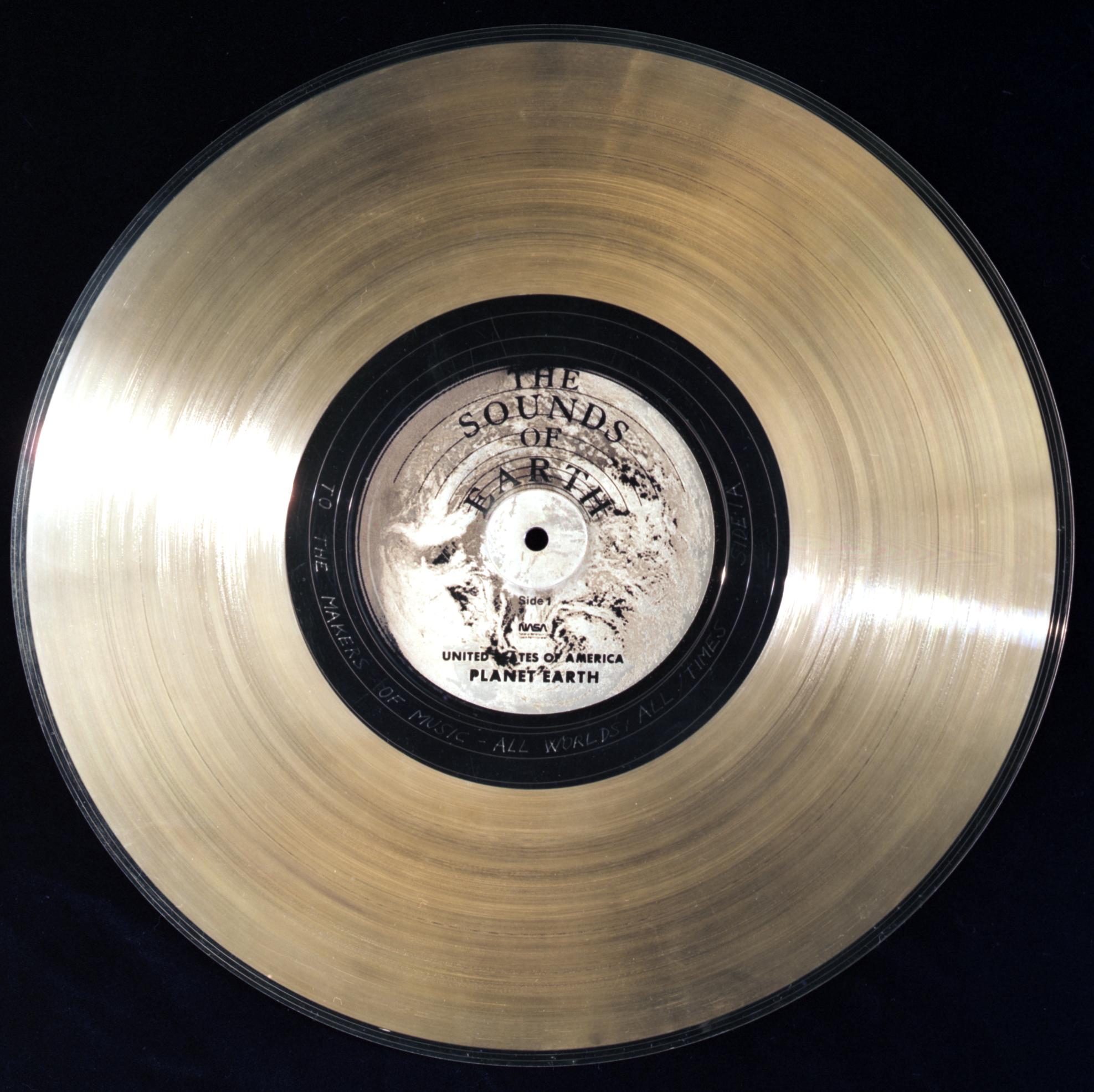
The Pale Blue Dot
The behind-the-scenes story of the making of Voyager 1's iconic image of Earth as "a mote of dust suspended in a sunbeam."

Discover More Topics From NASA

Our Solar System

Heliosphere
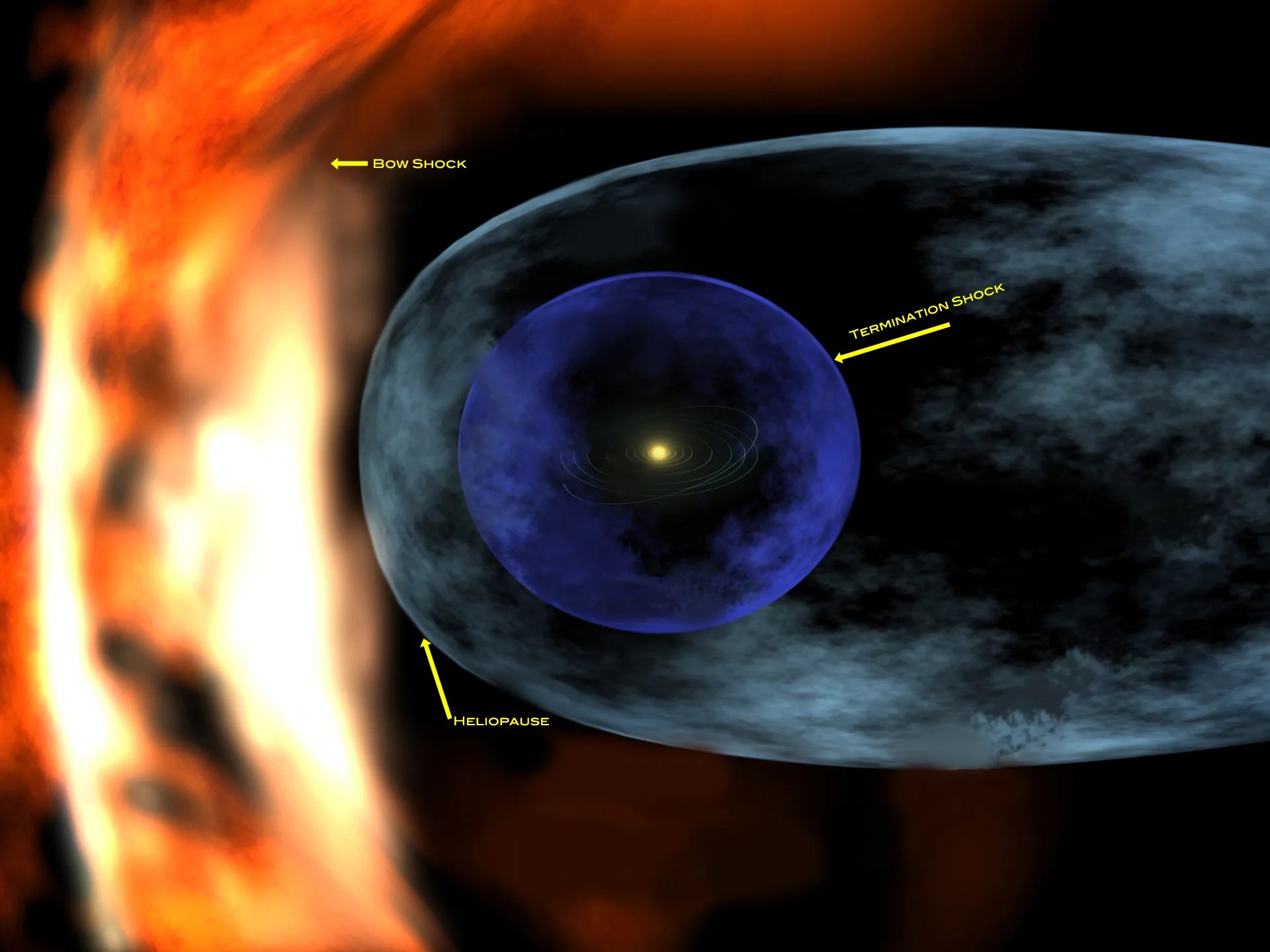

- Members Page Private
- Community Join Discord SMP World
- Downloads Wallpapers Server Maps Large Builds Small Builds Starter Houses
- Your cart is empty.
- SMP World NEW
- Server Maps
- Large Builds
- Small Builds
- Starter Houses
- Download Support

Voyager-X Largest Spaceship in Minecraft

Description
This is the largest spaceship that has ever been built in minecraft. voyager-x has 21 floors containing hundreds of rooms the ship contains 4.4 million blocks and spans 756 blocks in length, it contains everything you would need to conquer the galaxy , world features, 21 floors (interior included), science labs, dormitories , navigation centres, farming & garden facilities, space force (spaceship fleets), includes world files for, java edition, bedrock edition, as seen on tiktok and instagram, other downloads.

Hemlock Log Cabin

Modern Island House

Craned Villager House

Starter House #65

Mystical Swamp Shack

Medieval Sailing Ship

Rustic House

Palace Mansion
You must log in to submit a review.
Username or Email Address
Remember Me
Leave a reply Cancel reply
Save my name, email, and website in this browser for the next time I comment.
Choose Your Desired Option(s) & Add Wishlist
Lost Password?
- Mobile Site
- Staff Directory
- Advertise with Ars
Filter by topic
- Biz & IT
- Gaming & Culture
Front page layout
22.5 light hours —
Recoding voyager 1—nasa’s interstellar explorer is finally making sense again, "we're pretty much seeing everything we had hoped for, and that's always good news.”.
Stephen Clark - Apr 23, 2024 5:56 pm UTC
Engineers have partially restored a 1970s-era computer on NASA's Voyager 1 spacecraft after five months of long-distance troubleshooting, building confidence that humanity's first interstellar probe can eventually resume normal operations.
Several dozen scientists and engineers gathered Saturday in a conference room at NASA's Jet Propulsion Laboratory, or connected virtually, to wait for a new signal from Voyager 1. The ground team sent a command up to Voyager 1 on Thursday to recode part of the memory of the spacecraft's Flight Data Subsystem (FDS) , one of the probe's three computers.
“In the minutes leading up to when we were going to see a signal, you could have heard a pin drop in the room," said Linda Spilker, project scientist for NASA's two Voyager spacecraft at JPL. "It was quiet. People were looking very serious. They were looking at their computer screens. Each of the subsystem (engineers) had pages up that they were looking at, to watch as they would be populated."
Finally, a breakthrough
Launched nearly 47 years ago, Voyager 1 is flying on an outbound trajectory more than 15 billion miles (24 billion kilometers) from Earth, and it takes 22-and-a-half hours for a radio signal to cover that distance at the speed of light. This means it takes nearly two days for engineers to uplink a command to Voyager 1 and get a response.
In November, Voyager 1 suddenly stopped transmitting its usual stream of data containing information about the spacecraft's health and measurements from its scientific instruments. Instead, the spacecraft's data stream was entirely unintelligible. Because the telemetry was unreadable, experts on the ground could not easily tell what went wrong. They hypothesized the source of the problem might be in the memory bank of the FDS.
There was a breakthrough last month when engineers sent up a novel command to "poke" Voyager 1's FDS to send back a readout of its memory. This readout allowed engineers to pinpoint the location of the problem in the FDS memory . The FDS is responsible for packaging engineering and scientific data for transmission to Earth.
After a few weeks, NASA was ready to uplink a solution to get the FDS to resume packing engineering data. This data stream includes information on the status of the spacecraft—things like power levels and temperature measurements. This command went up to Voyager 1 through one of NASA's large Deep Space Network antennas Thursday.
Then, the wait for a response. Spilker, who started working on Voyager right out of college in 1977, was in the room when Voyager 1's signal reached Earth Saturday.
"When the time came to get the signal, we could clearly see all of a sudden, boom, we had data, and there were tears and smiles and high fives," she told Ars. "Everyone was very happy and very excited to see that, hey, we're back in communication again with Voyager 1. We're going to see the status of the spacecraft, the health of the spacecraft, for the first time in five months."

Throughout the five months of troubleshooting, Voyager's ground team continued to receive signals indicating the spacecraft was still alive. But until Saturday, they lacked insight into specific details about the status of Voyager 1.
“It’s pretty much just the way we left it," Spilker said. "We're still in the initial phases of analyzing all of the channels and looking at their trends. Some of the temperatures went down a little bit with this period of time that's gone on, but we're pretty much seeing everything we had hoped for. And that's always good news.”
Relocating code
Through their investigation, Voyager's ground team discovered a single chip responsible for storing a portion of the FDS memory stopped working, probably due to either a cosmic ray hit or a failure of aging hardware. This affected some of the computer's software code.
"That took out a section of memory," Spilker said. "What they have to do is relocate that code into a different portion of the memory, and then make sure that anything that uses those codes, those subroutines, know to go to the new location of memory, for access and to run it."
Only about 3 percent of the FDS memory was corrupted by the bad chip, so engineers needed to transplant that code into another part of the memory bank. But no single location is large enough to hold the section of code in its entirety, NASA said.
So the Voyager team divided the code into sections for storage in different places in the FDS. This wasn't just a copy-and-paste job. Engineers needed to modify some of the code to make sure it will all work together. "Any references to the location of that code in other parts of the FDS memory needed to be updated as well," NASA said in a statement.
reader comments
Channel ars technica.
- International edition
- Australia edition
- Europe edition

Voyager 1 transmitting data again after Nasa remotely fixes 46-year-old probe
Engineers spent months working to repair link with Earth’s most distant spacecraft, says space agency
Earth’s most distant spacecraft, Voyager 1, has started communicating properly again with Nasa after engineers worked for months to remotely fix the 46-year-old probe.
Nasa’s Jet Propulsion Laboratory (JPL), which makes and operates the agency’s robotic spacecraft, said in December that the probe – more than 15bn miles (24bn kilometres) away – was sending gibberish code back to Earth.
In an update released on Monday , JPL announced the mission team had managed “after some inventive sleuthing” to receive usable data about the health and status of Voyager 1’s engineering systems. “The next step is to enable the spacecraft to begin returning science data again,” JPL said. Despite the fault, Voyager 1 had operated normally throughout, it added.
Launched in 1977, Voyager 1 was designed with the primary goal of conducting close-up studies of Jupiter and Saturn in a five-year mission. However, its journey continued and the spacecraft is now approaching a half-century in operation.
Voyager 1 crossed into interstellar space in August 2012, making it the first human-made object to venture out of the solar system. It is currently travelling at 37,800mph (60,821km/h).
Hi, it's me. - V1 https://t.co/jgGFBfxIOe — NASA Voyager (@NASAVoyager) April 22, 2024
The recent problem was related to one of the spacecraft’s three onboard computers, which are responsible for packaging the science and engineering data before it is sent to Earth. Unable to repair a broken chip, the JPL team decided to move the corrupted code elsewhere, a tricky job considering the old technology.
The computers on Voyager 1 and its sister probe, Voyager 2, have less than 70 kilobytes of memory in total – the equivalent of a low-resolution computer image. They use old-fashioned digital tape to record data.
The fix was transmitted from Earth on 18 April but it took two days to assess if it had been successful as a radio signal takes about 22 and a half hours to reach Voyager 1 and another 22 and a half hours for a response to come back to Earth. “When the mission flight team heard back from the spacecraft on 20 April, they saw that the modification worked,” JPL said.
Alongside its announcement, JPL posted a photo of members of the Voyager flight team cheering and clapping in a conference room after receiving usable data again, with laptops, notebooks and doughnuts on the table in front of them.
The Retired Canadian astronaut Chris Hadfield, who flew two space shuttle missions and acted as commander of the International Space Station, compared the JPL mission to long-distance maintenance on a vintage car.
“Imagine a computer chip fails in your 1977 vehicle. Now imagine it’s in interstellar space, 15bn miles away,” Hadfield wrote on X . “Nasa’s Voyager probe just got fixed by this team of brilliant software mechanics.
Voyager 1 and 2 have made numerous scientific discoveries , including taking detailed recordings of Saturn and revealing that Jupiter also has rings, as well as active volcanism on one of its moons, Io. The probes later discovered 23 new moons around the outer planets.
As their trajectory takes them so far from the sun, the Voyager probes are unable to use solar panels, instead converting the heat produced from the natural radioactive decay of plutonium into electricity to power the spacecraft’s systems.
Nasa hopes to continue to collect data from the two Voyager spacecraft for several more years but engineers expect the probes will be too far out of range to communicate in about a decade, depending on how much power they can generate. Voyager 2 is slightly behind its twin and is moving slightly slower.
In roughly 40,000 years, the probes will pass relatively close, in astronomical terms, to two stars. Voyager 1 will come within 1.7 light years of a star in the constellation Ursa Minor, while Voyager 2 will come within a similar distance of a star called Ross 248 in the constellation of Andromeda.

Cosmic cleaners: the scientists scouring English cathedral roofs for space dust

Russia acknowledges continuing air leak from its segment of space station

Uncontrolled European satellite falls to Earth after 30 years in orbit

Cosmonaut Oleg Kononenko sets world record for most time spent in space

‘Old smokers’: astronomers discover giant ancient stars in Milky Way

Nasa postpones plans to send humans to moon

What happened to the Peregrine lander and what does it mean for moon missions?

Peregrine 1 has ‘no chance’ of landing on moon due to fuel leak
Most viewed.
share this!
April 22, 2024
This article has been reviewed according to Science X's editorial process and policies . Editors have highlighted the following attributes while ensuring the content's credibility:
fact-checked
trusted source
NASA's Voyager 1 resumes sending engineering updates to Earth

For the first time since November, NASA's Voyager 1 spacecraft is returning usable data about the health and status of its onboard engineering systems. The next step is to enable the spacecraft to begin returning science data again. The probe and its twin, Voyager 2, are the only spacecraft to ever fly in interstellar space (the space between stars).
Voyager 1 stopped sending readable science and engineering data back to Earth on Nov. 14, 2023, even though mission controllers could tell the spacecraft was still receiving their commands and otherwise operating normally. In March, the Voyager engineering team at NASA's Jet Propulsion Laboratory in Southern California confirmed that the issue was tied to one of the spacecraft's three onboard computers, called the flight data subsystem (FDS). The FDS is responsible for packaging the science and engineering data before it's sent to Earth.
The team discovered that a single chip responsible for storing a portion of the FDS memory—including some of the FDS computer's software code—isn't working. The loss of that code rendered the science and engineering data unusable. Unable to repair the chip, the team decided to place the affected code elsewhere in the FDS memory. But no single location is large enough to hold the section of code in its entirety.
So they devised a plan to divide the affected code into sections and store those sections in different places in the FDS. To make this plan work, they also needed to adjust those code sections to ensure, for example, that they all still function as a whole. Any references to the location of that code in other parts of the FDS memory needed to be updated as well.

The team started by singling out the code responsible for packaging the spacecraft's engineering data. They sent it to its new location in the FDS memory on April 18. A radio signal takes about 22.5 hours to reach Voyager 1, which is over 15 billion miles (24 billion kilometers) from Earth, and another 22.5 hours for a signal to come back to Earth. When the mission flight team heard back from the spacecraft on April 20, they saw that the modification had worked: For the first time in five months, they were able to check the health and status of the spacecraft.
During the coming weeks, the team will relocate and adjust the other affected portions of the FDS software. These include the portions that will start returning science data.
Voyager 2 continues to operate normally. Launched over 46 years ago, the twin Voyager spacecraft are the longest-running and most distant spacecraft in history. Before the start of their interstellar exploration, both probes flew by Saturn and Jupiter, and Voyager 2 flew by Uranus and Neptune.
Provided by NASA
Explore further
Feedback to editors

Global study shows a third more insects come out after dark
16 hours ago

Cicada-palooza! Billions of bugs to blanket America
19 hours ago

Getting dynamic information from static snapshots

Ancient Maya blessed their ballcourts: Researchers find evidence of ceremonial offerings in Mexico

Optical barcodes expand range of high-resolution sensor
Apr 26, 2024

Ridesourcing platforms thrive on socio-economic inequality, say researchers

Did Vesuvius bury the home of the first Roman emperor?

Florida dolphin found with highly pathogenic avian flu: Report

A new way to study and help prevent landslides

New algorithm cuts through 'noisy' data to better predict tipping points
Relevant physicsforums posts, need help simplifying standard error formula for redshift, our beautiful universe - photos and videos.
Apr 25, 2024

Solar Activity and Space Weather Update thread
'devil' comet visible tonight 21.04.24, waves in space, documenting the setup of my new telescope.
Apr 24, 2024
More from Astronomy and Astrophysics
Related Stories

Engineers working to resolve issue with Voyager 1 computer
Dec 13, 2023

NASA hears signal from Voyager 2 spacecraft after mistakenly cutting contact
Aug 1, 2023

NASA listens for Voyager 2 spacecraft after wrong command cuts contact
Jul 31, 2023

NASA's Voyager team focuses on software patch, thrusters
Oct 20, 2023

NASA's Voyager will do more science with new power strategy
Apr 27, 2023

Engineers investigating NASA's Voyager 1 telemetry data
May 18, 2022
Recommended for you

Japan's moon lander wasn't built to survive a weekslong lunar night. It's still going after 3

Simulated microgravity affects sleep and physiological rhythms, study finds
Apr 22, 2024

'Tube map' around planets and moons made possible by knot theory
Apr 17, 2024

NASA's Ingenuity Mars helicopter team says goodbye—for now

NASA confirms mystery object that crashed through roof of Florida home came from space station
Apr 16, 2024

NASA is seeking a faster, cheaper way to bring Mars samples to Earth
Let us know if there is a problem with our content.
Use this form if you have come across a typo, inaccuracy or would like to send an edit request for the content on this page. For general inquiries, please use our contact form . For general feedback, use the public comments section below (please adhere to guidelines ).
Please select the most appropriate category to facilitate processing of your request
Thank you for taking time to provide your feedback to the editors.
Your feedback is important to us. However, we do not guarantee individual replies due to the high volume of messages.
E-mail the story
Your email address is used only to let the recipient know who sent the email. Neither your address nor the recipient's address will be used for any other purpose. The information you enter will appear in your e-mail message and is not retained by Phys.org in any form.
Newsletter sign up
Get weekly and/or daily updates delivered to your inbox. You can unsubscribe at any time and we'll never share your details to third parties.
More information Privacy policy
Donate and enjoy an ad-free experience
We keep our content available to everyone. Consider supporting Science X's mission by getting a premium account.
E-mail newsletter
Voyager 1 talking to Earth again after NASA engineers 24 billion kilometres away devise software fix
NASA's Voyager 1 probe — the most distant man-made object in the universe — is returning usable information to ground control following months of spouting gibberish, the US space agency says.
The spaceship stopped sending readable data back to Earth on November 14, 2023, even though controllers could tell it was still receiving their commands.
In March, teams working at NASA's Jet Propulsion Laboratory discovered that a single malfunctioning chip was to blame.
They then had to devise a clever coding fix that worked within the tight memory constraints of its 46-year-old computer system.
"There was a section of the computer memory no longer working," project leader Dr Linda Spilker told the ABC.
"So we had to reprogram what was in that memory, move it to a different location, link everything back together and send everything up in a patch.
"And then on Saturday morning, we watched as Voyager 1 sent its first commands back and we knew we were back in communication once again."
Dr Spilker said they were receiving engineering data, so they knew the health and safety of the spacecraft.
"The next step is going to be to develop a patch so we can send back the science data," she said.
"That will really be exciting, to once again learn about interstellar space and what has been going on there that we've missed since November."
Dr Spilker said Voyager sent back data in real time, so the team had no facility to retrieve data covering the time since transmission was lost.
Launched in 1977, Voyager 1 was mankind's first spacecraft to enter the interstellar medium , in 2012, and is currently more than 24 billion kilometres from Earth.
Messages sent from Earth take about 22.5 hours to reach the spacecraft.
Its twin, Voyager 2, also left the solar system in 2018 as it was tracked by Australia's Parkes radio telescope.
Australia was also vital to a 2023 search for Voyager 2 after signals were lost, with Canberra's Deep Space Communication Complex monitoring for signals and then sending a successful command to shift the spacecraft's antenna 2 degrees .
Both Voyager spacecraft carry " Golden Records ": 12-inch, gold-plated copper disks intended to convey the story of our world to extraterrestrials.
These include a map of our solar system, a piece of uranium that serves as a radioactive clock allowing recipients to date the spaceship's launch, and symbolic instructions that convey how to play the record.
The contents of the record, selected for NASA by a committee chaired by legendary astronomer Carl Sagan, include encoded images of life on Earth, as well as music and sounds that can be played using an included stylus.
Their power banks were expected to be depleted sometime after 2025, but Dr Spilker said several systems had been turned off, so they were hopeful the two spacecraft would function into the 2030s.
They will then continue to wander the Milky Way, potentially for eternity, in silence.
- X (formerly Twitter)
Related Stories
Nasa restores contact with missing voyager 2 spacecraft after weeks of silence.
How songs from tiny villages in the Pacific are now floating in outer space
Voyager 1 spacecraft enters interstellar space
- Astronomy (Space)
- Computer Science
- Space Exploration
- United States
Subscribe or renew today
Every print subscription comes with full digital access
Science News
‘humanity’s spacecraft’ voyager 1 is back online and still exploring.
After five months of glitching, the spacecraft is talking to Earth again from interstellar space

The Voyager 1 spacecraft (illustrated) is back online after a few months of transmitting garbled data. It’s now poised to continue its exploration of interstellar space.
JPL-Caltech/NASA
Share this:
By Ramin Skibba
April 26, 2024 at 11:45 am
After months of challenging trouble-shooting and suspenseful waiting, Voyager 1 is once again talking to Earth.
The aging NASA spacecraft, about 24 billion kilometers from home, began transmitting garbled data in November. On April 20, NASA scientists got the probe back online after uploading new flight software to work around a chunk of onboard computer memory that had failed. They’re now receiving data about the spacecraft’s health and hope to hear from its science instruments again in a few weeks, says Suzanne Dodd, the mission’s project manager at NASA’s Jet Propulsion Laboratory in Pasadena, Calif.
That means the iconic craft could be on a path to recovery — and to continue its exploration of interstellar space.
Launched in 1977, Voyager 1 briefly visited Jupiter and Saturn before eventually departing the solar system. It and its twin, Voyager 2, are the longest-operating space probes, now tasked with studying far-flung solar particles and cosmic rays. In particular, the probes have been monitoring the changing of the sun’s magnetic field and the density of plasma beyond the solar system, yielding information about the farthest reaches of the sun’s influence .
“The spacecraft is really remarkable in its longevity. It’s incredible,” Dodd says. “We want to keep Voyager going as long as possible so we have this time record of these changes.”
Voyager 1 and 2, cruising along diverging paths, made history by crossing the heliopause in 2012 and 2018 , respectively ( SN: 9/12/13; SN: 12/10/18 ). At nearly 18 billion kilometers from the sun, that’s long been considered the outer extent of our star’s magnetic field and the solar wind, the boundary before interstellar space.
Since then, Dodd says, the science team has made some surprising findings ( SN: 11/4/19 ). For one, they’ve determined that the heliosphere, the huge bubble of space dominated by the solar wind, might not be spherical but have one or two tails, making it shaped like a comet or a croissant.
And thanks to Voyager, scientists now know that, despite expectations otherwise, the sun’s magnetic field and charged particles actually remain significant even beyond the heliopause, says David McComas, a Princeton University astrophysicist not involved in the mission.
Some theories predicted a serene environment in the distant oceans of interstellar space, but the Voyagers keep passing through waves of charged particles, indicating that the solar magnetic field still holds some sway there. What’s more, the probes’ data have shown how ripples in the field form bubbles at the edge of the solar system, which is more frothy and dynamic than expected.
Other missions have begun building on Voyager’s solar physics research. These include NASA’s Interstellar Boundary Explorer, or IBEX, and the Interstellar Mapping and Acceleration Probe, or IMAP, which is set to launch next year. Earth-orbiting IBEX has been measuring high-energy particles to map the heliosphere for 15 years, whereas IMAP will orbit between the sun and Earth, giving it an uninterrupted view of the sun as it monitors the galactic cosmic rays that manage to filter through the heliosphere.
“There’s a huge synergy between the Voyagers and both IBEX and IMAP,” says McComas, principal investigator of the latter two missions. “We were all really scared when Voyager 1 stopped phoning home.”
It will be decades until another mission could accomplish what the Voyagers have done. NASA’s New Horizons soared by Pluto in 2015 and kept going ( SN:8/9/18 ). It’s heading toward the edge of the solar system, but it’s cruising slowly and will run out of power before it can collect data beyond the heliopause.
The Voyagers can fly forever, but power for their instruments is waning. Over the next few years, NASA will shut some down to conserve energy for the rest.
That means Voyager 1’s days of collecting science data are numbered. “It’s a very beloved mission,” Dodd says. “It’s humanity’s spacecraft, and we need to take care of it.”
More Stories from Science News on Space

Separating science fact from fiction in Netflix’s ‘3 Body Problem’

Pluto’s heart-shaped basin might not hide an ocean after all

Our picture of habitability on Europa, a top contender for hosting life, is changing

Jupiter’s moon Io may have been volcanically active ever since it was born

50 years ago, scientists found a lunar rock nearly as old as the moon

How a sugar acid crucial for life could have formed in interstellar clouds

What Science News saw during the solar eclipse

During the awe of totality, scientists studied our planet’s reactions
Subscribers, enter your e-mail address for full access to the Science News archives and digital editions.
Not a subscriber? Become one now .
Inside NASA's 5-month fight to save the Voyager 1 mission in interstellar space

After working for five months to re-establish communication with the farthest-flung human-made object in existence, NASA announced this week that the Voyager 1 probe had finally phoned home.
For the engineers and scientists who work on NASA’s longest-operating mission in space, it was a moment of joy and intense relief.
“That Saturday morning, we all came in, we’re sitting around boxes of doughnuts and waiting for the data to come back from Voyager,” said Linda Spilker, the project scientist for the Voyager 1 mission at NASA’s Jet Propulsion Laboratory in Pasadena, California. “We knew exactly what time it was going to happen, and it got really quiet and everybody just sat there and they’re looking at the screen.”
When at long last the spacecraft returned the agency’s call, Spilker said the room erupted in celebration.
“There were cheers, people raising their hands,” she said. “And a sense of relief, too — that OK, after all this hard work and going from barely being able to have a signal coming from Voyager to being in communication again, that was a tremendous relief and a great feeling.”

The problem with Voyager 1 was first detected in November . At the time, NASA said it was still in contact with the spacecraft and could see that it was receiving signals from Earth. But what was being relayed back to mission controllers — including science data and information about the health of the probe and its various systems — was garbled and unreadable.
That kicked off a monthslong push to identify what had gone wrong and try to save the Voyager 1 mission.
Spilker said she and her colleagues stayed hopeful and optimistic, but the team faced enormous challenges. For one, engineers were trying to troubleshoot a spacecraft traveling in interstellar space , more than 15 billion miles away — the ultimate long-distance call.
“With Voyager 1, it takes 22 1/2 hours to get the signal up and 22 1/2 hours to get the signal back, so we’d get the commands ready, send them up, and then like two days later, you’d get the answer if it had worked or not,” Spilker said.

The team eventually determined that the issue stemmed from one of the spacecraft’s three onboard computers. Spilker said a hardware failure, perhaps as a result of age or because it was hit by radiation, likely messed up a small section of code in the memory of the computer. The glitch meant Voyager 1 was unable to send coherent updates about its health and science observations.
NASA engineers determined that they would not be able to repair the chip where the mangled software is stored. And the bad code was also too large for Voyager 1's computer to store both it and any newly uploaded instructions. Because the technology aboard Voyager 1 dates back to the 1960s and 1970s, the computer’s memory pales in comparison to any modern smartphone. Spilker said it’s roughly equivalent to the amount of memory in an electronic car key.
The team found a workaround, however: They could divide up the code into smaller parts and store them in different areas of the computer’s memory. Then, they could reprogram the section that needed fixing while ensuring that the entire system still worked cohesively.
That was a feat, because the longevity of the Voyager mission means there are no working test beds or simulators here on Earth to test the new bits of code before they are sent to the spacecraft.
“There were three different people looking through line by line of the patch of the code we were going to send up, looking for anything that they had missed,” Spilker said. “And so it was sort of an eyes-only check of the software that we sent up.”
The hard work paid off.
NASA reported the happy development Monday, writing in a post on X : “Sounding a little more like yourself, #Voyager1.” The spacecraft’s own social media account responded , saying, “Hi, it’s me.”
So far, the team has determined that Voyager 1 is healthy and operating normally. Spilker said the probe’s scientific instruments are on and appear to be working, but it will take some time for Voyager 1 to resume sending back science data.
Voyager 1 and its twin, the Voyager 2 probe, each launched in 1977 on missions to study the outer solar system. As it sped through the cosmos, Voyager 1 flew by Jupiter and Saturn, studying the planets’ moons up close and snapping images along the way.
Voyager 2, which is 12.6 billion miles away, had close encounters with Jupiter, Saturn, Uranus and Neptune and continues to operate as normal.
In 2012, Voyager 1 ventured beyond the solar system , becoming the first human-made object to enter interstellar space, or the space between stars. Voyager 2 followed suit in 2018.
Spilker, who first began working on the Voyager missions when she graduated college in 1977, said the missions could last into the 2030s. Eventually, though, the probes will run out of power or their components will simply be too old to continue operating.
Spilker said it will be tough to finally close out the missions someday, but Voyager 1 and 2 will live on as “our silent ambassadors.”
Both probes carry time capsules with them — messages on gold-plated copper disks that are collectively known as The Golden Record . The disks contain images and sounds that represent life on Earth and humanity’s culture, including snippets of music, animal sounds, laughter and recorded greetings in different languages. The idea is for the probes to carry the messages until they are possibly found by spacefarers in the distant future.
“Maybe in 40,000 years or so, they will be getting relatively close to another star,” Spilker said, “and they could be found at that point.”
Denise Chow is a reporter for NBC News Science focused on general science and climate change.
- Bishop Airlock
- Satellite Launch Services
- Astronaut Health & Medicine
- Mission Management, Ops, & Integration
- Advanced Systems
- Research & Tech Payloads
- Technical Resources
- In Space Servicing & Assembly
- Satellite and Spacecraft Subsystems
- Electro-Optics, Guidance & Navigation
- Digital Systems
- Signals Intelligence
- TALIX: Tactical Precision
- Ground Launch Support
© Copyright. All rights reserved.
Legal & Privacy Notices
Explore Space
Enabling your mission, from microgravity research to satellite deployment and commercial activities.
Innovate Forward
Pioneering space technology solutions for a sustainable future.
Protect from Ground to Space
Leading-edge defense solutions for ground, air, and space.
Expanding Frontiers
Starlab is unleashing the next generation of commercial space destinations.

Unleashing the next generation of space destinations.
Starlab, a US-led joint venture between Voyager Space and Airbus, will serve global space agencies and companies while ensuring continued human presence in low-Earth orbit and the transition of microgravity research into the new commercial era.

Airlocks, critical infrastructure for all space stations, facilitate movement between the internal station environment and the vacuum of space. From hosted payloads to robotics research and satellite deployment, learn how Bishop can advance your mission.

Our spacecraft technologies have long-standing heritage, enabling LEO, GEO and Cislunar missions since 2006 with a failure-free cumulative track record. Our solutions include rad-hardened laser and RF communications systems, electro-optical and digital systems, star trackers, space situational awareness-capable space cameras, image processors, command and data handling systems, and solutions for in-space servicing and assembly.

Our controllable solid propulsion technologies make solids perform like liquids. This technology allows for the in-flight modulation of thrust for solid fuel boosters, enabling a dramatic improvement in accuracy for both subsonic and hypersonic systems.

We are the leading provider of commercial research opportunities in low-Earth orbit. Whether you are designing your own plug-and-play payload leveraging our standardized hardware, or want our team to build a custom research platform for you – we are here to help.

We offer software and technologies that provide space-to-Earth and space-to-space visualization in support of Intelligence, Surveillance, and Reconnaissance (ISR) applications.

Our technologies help solve the medical and physiological problems of spaceflight and off-world surface exploration. We deliver a broad range of novel, non-invasive, and versatile instrumentation and hardware tailored for space mission-unique requirements.

Forging the Future.
We are Voyager Space, a leading space company dedicated to bettering humanity’s future through bold exploration, cutting-edge technologies, and an unwavering drive to protect our planet and our people.
It Takes a Planet to Explore the Universe
We’re committed to advancing humanity by driving space norms, empowering youth, and valuing sustainability from Earth to orbit, aiming for a prosperous future with a lasting, positive impact.

- The Contents
- The Making of
- Where Are They Now
- Frequently Asked Questions
- Q & A with Ed Stone
golden record
Where are they now.
- frequently asked questions
- Q&A with Ed Stone
Galleries of Images Voyager Took
The Voyager 1 and 2 spacecraft explored Jupiter, Saturn, Uranus and Neptune before starting their journey toward interstellar space. Here you'll find some of those iconic images, including "The Pale Blue Dot" - famously described by Carl Sagan - and what are still the only up-close images of Uranus and Neptune.
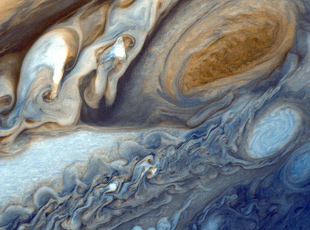
Photography of Jupiter began in January 1979, when images of the brightly banded planet already exceeded the best taken from Earth. Voyager 1 completed its Jupiter encounter in early April, after taking almost 19,000 pictures and many other scientific measurements. Voyager 2 picked up the baton in late April and its encounter continued into August. They took more than 33,000 pictures of Jupiter and its five major satellites.
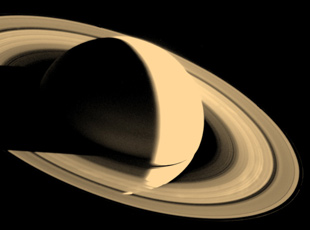
The Voyager 1 and 2 Saturn encounters occurred nine months apart, in November 1980 and August 1981. Voyager 1 is leaving the solar system. Voyager 2 completed its encounter with Uranus in January 1986 and with Neptune in August 1989, and is now also en route out of the solar system.
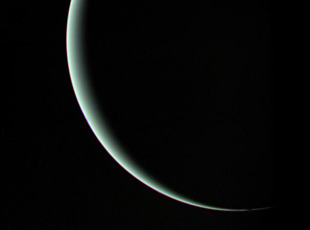
NASA's Voyager 2 spacecraft flew closely past distant Uranus, the seventh planet from the Sun, in January. At its closet, the spacecraft came within 81,800 kilometers (50,600 miles) of Uranus's cloudtops on Jan. 24, 1986. Voyager 2 radioed thousands of images and voluminous amounts of other scientific data on the planet, its moons, rings, atmosphere, interior and the magnetic environment surrounding Uranus.
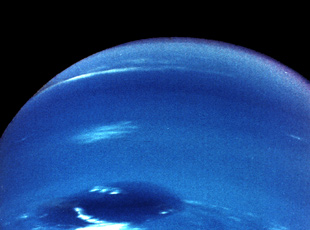
In the summer of 1989, NASA's Voyager 2 became the first spacecraft to observe the planet Neptune, its final planetary target. Passing about 4,950 kilometers (3,000 miles) above Neptune's north pole, Voyager 2 made its closest approach to any planet since leaving Earth 12 years ago. Five hours later, Voyager 2 passed about 40,000 kilometers (25,000 miles) from Neptune's largest moon, Triton, the last solid body the spacecraft will have an opportunity to study.
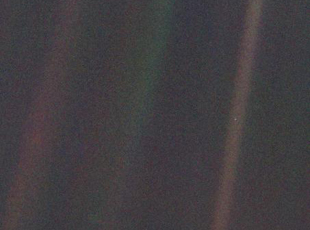
This narrow-angle color image of the Earth, dubbed 'Pale Blue Dot', is a part of the first ever 'portrait' of the solar system taken by Voyager 1. The spacecraft acquired a total of 60 frames for a mosaic of the solar system from a distance of more than 4 billion miles from Earth and about 32 degrees above the ecliptic. From Voyager's great distance Earth is a mere point of light, less than the size of a picture element even in the narrow-angle camera. Earth was a crescent only 0.12 pixel in size. Coincidentally, Earth lies right in the center of one of the scattered light rays resulting from taking the image so close to the sun. This blown-up image of the Earth was taken through three color filters -- violet, blue and green -- and recombined to produce the color image. The background features in the image are artifacts resulting from the magnification.
- Skip to main content
- Keyboard shortcuts for audio player
China launches a new crew to its space station, advancing toward lunar mission

John Ruwitch

A Long March rocket carrying a crew of Chinese astronauts in a Shenzhou-18 spaceship lifts off at the Jiuquan Satellite Launch Center in northwestern China on Thursday. Andy Wong/AP hide caption
A Long March rocket carrying a crew of Chinese astronauts in a Shenzhou-18 spaceship lifts off at the Jiuquan Satellite Launch Center in northwestern China on Thursday.
JIUQUAN SATELLITE LAUNCH CENTER, China – China launched three astronauts into space on Thursday night, bound for the country's homemade space station where they will live and work for half a year.
The Shenzhou-18 launch is the latest in a series rotating taikonauts, as China calls its space explorers (the Chinese word for "space" is taikong ), through multi-month missions in orbit to conduct experiments and amass experience for eventual trips to the Moon and beyond.
The crewed missions are just one facet of an ambitious and fast-moving space program that international experts and officials worry could pose a threat to U.S. space superiority and military effectiveness on Earth.

NASA astronaut Tom Stafford, famed for U.S.-Soviet orbital handshake, has died at 93
Thursday's launch coincides with a visit to China by Secretary of State Antony Blinken, who made stops in Shanghai and Beijing to advocate for a level playing field for U.S. businesses and press Beijing to stop supporting Russia's war effort against Ukraine.

From left, astronauts for China's Shenzhou-18 space mission Li Guangsu, Ye Guangfu and Li Cong wave during a departure ceremony before boarding a bus to take them to the Shenzhou-18 spacecraft at the Jiuquan Satellite Launch Center in the Gobi desert in northwest China on Thursday. Greg Baker/AFP via Getty Images hide caption
From left, astronauts for China's Shenzhou-18 space mission Li Guangsu, Ye Guangfu and Li Cong wave during a departure ceremony before boarding a bus to take them to the Shenzhou-18 spacecraft at the Jiuquan Satellite Launch Center in the Gobi desert in northwest China on Thursday.
At one minute before 9 p.m., Shenzhou-18's Long March 2F rocket lit up the night and tore skyward to cheers from onlookers at the Jiuquan Satellite Launch Center in remote western China.
A day earlier, China unveiled the crew — commander Ye Guangfu, Li Cong and Li Guangsu. All are former fighter pilots, all born in the 1980s.

Third time's the charm: SpaceX's massive Starship reaches space
"I am thoroughly looking forward to the coming half-year of life in space. Embarking on this space expedition for the motherland is my greatest happiness," Li Guangsu told reporters the day before the flight.
The three taikonauts were not the only ones headed to the space station on Thursday. Several zebrafish were also slated to be part of the mission, according to the China Manned Space Agency. The crew will conduct more than 90 scientific experiments in orbit, including one that will try to establish a closed aquatic ecosystem with the minnows and a type of algae.

Well, hello, Voyager 1! The venerable spacecraft is once again making sense
"We hope that through this research we can understand the interaction between these plants and animals in space, so that in the future when we understand it we can establish a large-scale ecosystem with animals, plants and microorganisms ... and create a systematic loop and possibly a closed system so that people can live in space for long periods," said Zhang Wei, a professor of technology and engineering at the Center for Space Utilization at the Chinese Academy of Science.
The Shenzhou-18 crew will also add protective shielding to exposed pipes, wires and other systems on the outside of the space station, officials said. The previous crew discovered damage from space debris to a solar panel wire that CMSA says affected the power supply. They conducted space walks to fix it, but future damage from space debris is possible.
China's space program has come a long way in a relatively short period time, according to international experts. That has raised persistent concerns in the U.S., most recently from the commander of the U.S. Space Command, Gen. Stephen Whiting.
On Wednesday, Whiting told reporters that China had tripled its number of intelligence gathering satellites over the past six years, and he called the country's space advances "cause for concern."
Whiting said China's strides in space were helping it improve the effectiveness of its military on Earth. He also noted that China is developing a range of counter-space weapons — devices that can disable or disrupt other countries' space assets.
Indeed, China's space program is an outgrowth of the People's Liberation Army, with the crewed portion still directly under the military. Even many of the firms that comprise a growing commercial space sector have links to state-owned enterprises in the military industrial complex.
Still, some experts say calling competition between China and the United States a new space race is of debatable value.
"To me, it looks more like a very long endurance, no-end-in-sight, marathon. And the marathon we are running here in space is really against ourselves," says Svetla Ben-Itzhak, a space security expert at Johns Hopkins University.
She notes that while China has been making fast strides, the U.S. retains clear advantages in space — including operating close to 70% of all space assets, including satellites.
That leadership position, coupled with a growing dependence on space and a lack of transparency on the part of China, has fueled a security dilemma, she says.
U.S. law bans NASA from using government money to cooperate with China, and Beijing has been excluded from the International Space Station — part of the reason it developed its own space station.
China's endemic secrecy was apparent during a government-organized visit to the Jiuquan Satellite Launch Center for a small group of journalists.
Foreign reporters were housed in a town three hours by bus from the space center, while Chinese journalists stayed onsite. Trip details and schedules were withheld until the last minute. And plainclothes guards at the launch center kept a close eye on reporters to prevent them from wandering more than a few yards away from approved stops — or, at one location, aiming cameras at a camouflaged truck.
Yang Liwei, China's first astronaut, who went into space in 2003 aboard Shenzhou-5, says China would welcome more cooperation with the United States.
"China has always wanted to cooperate with the United States," he says. "In space exploration, and especially crewed space exploration, international cooperation is a major trend...[and] it's a common need of humanity."
Zhang Wei, the scientist, says China will keep plowing ahead regardless of worries about its program from abroad.
"That's not important. We just need to do our best. We don't really need to worry about whatever others think of us," he says.
- space exploration
Air Show Report : MAKS 2005 Moscow International Aviation & Space Salon
Report and photos by Andrew Philpott ( view portfolio )
Home | Aircraft | Air Forces | Air Shows | Specials | Wallpapers | News | Quiz | Forum
Contact | About | FAQ | Updates | RSS Feeds | Links | Search
Copyright © 2002-2024 Niels Hillebrand . All Rights Reserved | Privacy & Cookie Policy | Terms of Service

IMAGES
COMMENTS
Voyager-X spans 756 blocks in length and contains 4.4 million blocks. This project took me 700 hours to complete.Download on Bedrock and Java Edition ️ http...
voyager-x-spaceship-4-4-million-blocks-756-blocks-long. Join Planet Minecraft! We're a community of 4.4 million creative members sharing everything Minecraft since 2010! Even if you don't post your own creations, we always appreciate feedback on ours. Create Account Login. Minecraft Maps / 3D Art. Prev.
The probe and its twin, Voyager 2, are the only spacecraft to ever fly in interstellar space (the space between stars). Voyager 1 stopped sending readable science and engineering data back to Earth on Nov. 14, 2023, even though mission controllers could tell the spacecraft was still receiving their commands and otherwise operating normally.
Voyager 2 entered interstellar space on November 5, 2018 and scientists hope to learn more about this region. Both spacecraft are still sending scientific information about their surroundings through the Deep Space Network, or DSN. The primary mission was the exploration of Jupiter and Saturn. After making a string of discoveries there — such ...
U.S.S Voyager NCC-74656-J from Star Trek Discovery. Air Structure Map. 10%. 3. 935 1. x 4. TheDarkWilliams • 2 years ago. Voyager-X Spaceship (4.4 Million blocks, 756 blocks long)
The identical Voyager spacecraft are three-axis stabilized systems that use celestial or gyro referenced attitude control to maintain pointing of the high-gain antennas toward Earth. The prime mission science payload consisted of 10 instruments (11 investigations including radio science).
In 2012, Voyager 1 became the first spacecraft to enter interstellar space, the previously unexplored region between the stars. (Its twin, traveling in a different direction, followed suit six ...
Voyager-X Largest Spaceship in Minecraft. by charlie in Large Builds - Java & Bedrock. $9.90. September 27, 2022. Add to Cart. Or unlock this build and everything else with the All Access Pass. $1.00 Access Details. Log In.
Voyager 1 and its twin Voyager 2 are the only spacecraft ever to operate outside the heliosphere, the protective bubble of particles and magnetic fields generated by the Sun. Voyager 1 reached the interstellar boundary in 2012, while Voyager 2 (traveling slower and in a different direction than its twin) reached it in 2018. Mission Type.
Description This is the largest spaceship that has ever been built in Minecraft. Voyager-X has 21 floors containing hundreds of rooms The ship contains 4.4 million blocks and spans 756 blocks in length, it contains everything you would need to conquer the galaxy! World Features 21 floors (interior included) Science labs Dormitories Navigation centres Farming […]
Throughout the five months of troubleshooting, Voyager's ground team continued to receive signals indicating the spacecraft was still alive. But until Saturday, they lacked insight into specific ...
Voyager 1 crossed into interstellar space in August 2012, making it the first human-made object to venture out of the solar system. It is currently travelling at 37,800mph (60,821km/h). Hi, it's me.
Voyager 1's flight data system collects information from the spacecraft's science instruments and bundles it with engineering data that reflects its current health status.
Voyager 1 stopped sending readable science and engineering data back to Earth on Nov. 14, 2023, even though mission controllers could tell the spacecraft was still receiving their commands and ...
Messages sent from Earth take about 22.5 hours to reach the spacecraft. Its twin, Voyager 2, also left the solar system in 2018 as it was tracked by Australia's Parkes radio telescope.
After months of challenging trouble-shooting and suspenseful waiting, Voyager 1 is once again talking to Earth. The aging NASA spacecraft, about 24 billion kilometers from home, began transmitting ...
This is a real-time indicator of Voyager 1's distance from Earth in astronomical units (AU) and either miles (mi) or kilometers (km). Note: Because Earth moves around the sun faster than Voyager 1 is speeding away from the inner solar system, the distance between Earth and the spacecraft actually decreases at certain times of year.
A Titan/Centaur-6 launch vehicle carries NASA's Voyager 1 at the Kennedy Space Center on Sept. 5, 1977. NASA The team eventually determined that the issue stemmed from one of the spacecraft's ...
A poster of the planets and moons visited during the Voyager program. The Voyager program is an American scientific program that employs two interstellar probes, Voyager 1 and Voyager 2.They were launched in 1977 to take advantage of a favorable alignment of the two gas giants Jupiter and Saturn and the ice giants, Uranus and Neptune, to fly near them while collecting data for transmission ...
The identical Voyager spacecraft are three-axis stabilized systems that use celestial or gyro referenced attitude control to maintain pointing of the high-gain antennas toward Earth. The prime mission science payload consisted of 10 instruments (11 investigations including radio science). ... while an X-band transmitter provides downlink ...
Voyager was the first spacecraft to utilize X-band as the primary telemetry link frequency. Data could be stored for later transmission to Earth through the use of an on-board digital tape recorder. Voyager, because of its distance from Earth and the resulting time-lag for commanding, was designed to operate in a highly-autonomous manner. ...
The Voyager spacecraft benefited from multiple planetary flybys to increase its heliocentric velocities, whereas New Horizons received only a single such boost, from its Jupiter flyby in 2007. As of 2018, New Horizons is traveling at about 14 km/s (8.7 mi/s), 3 km/s (1.9 mi/s) slower than Voyager 1 and is still slowing down. Voyager 1 ...
We deliver a broad range of novel, non-invasive, and versatile instrumentation and hardware tailored for space mission-unique requirements. the Future. We are Voyager Space, a leading space company dedicated to bettering humanity's future through bold exploration, cutting-edge technologies, and an unwavering drive to protect our planet and ...
Explore the solar system with NASA's Eyes, an interactive web app that lets you simulate the orbits and movements of planets, moons, asteroids, and spacecraft. You can zoom in and out, change the speed and direction of time, and view the solar system from different perspectives. Learn about the missions that explore our cosmic neighborhood and discover the wonders of the sun, Earth, and other ...
Nasa's Voyager 1 probe was launched in 1977 to study the outer Solar System and eventually interstellar space Credit: Nasa/Hulton Archive/Getty Images) When the loneliest spacecraft in the ...
This narrow-angle color image of the Earth, dubbed 'Pale Blue Dot', is a part of the first ever 'portrait' of the solar system taken by Voyager 1. The spacecraft acquired a total of 60 frames for a mosaic of the solar system from a distance of more than 4 billion miles from Earth and about 32 degrees above the ecliptic.
Three astronauts will spend six months on China's space station. Some experts worry China's ambitious space program could pose a threat to U.S. space superiority and military effectiveness.
Industry: Remediation and Other Waste Management Services , Metal Ore Mining , Residential Building Construction , Iron and Steel Mills and Ferroalloy Manufacturing , Recycling, waste materials See All Industries, Iron ores, Metal ores, nec, Operative builders, Blast furnaces and steel mills Galvanized pipes, plates, sheets, etc.: iron and steel See Fewer Industries
Find company research, competitor information, contact details & financial data for SOYUZ, OOO of Elektrostal, Moscow region. Get the latest business insights from Dun & Bradstreet.
Air Show Report : MAKS 2005 Moscow International Aviation & Space Salon. Report by Andrew Philpott, all photos by author Financial reasons have restricted Russian Air Force equipment from attending airshows in the west for many years. We visited the best place in all of Russia to see military aircraft perform, the MAKS air show.